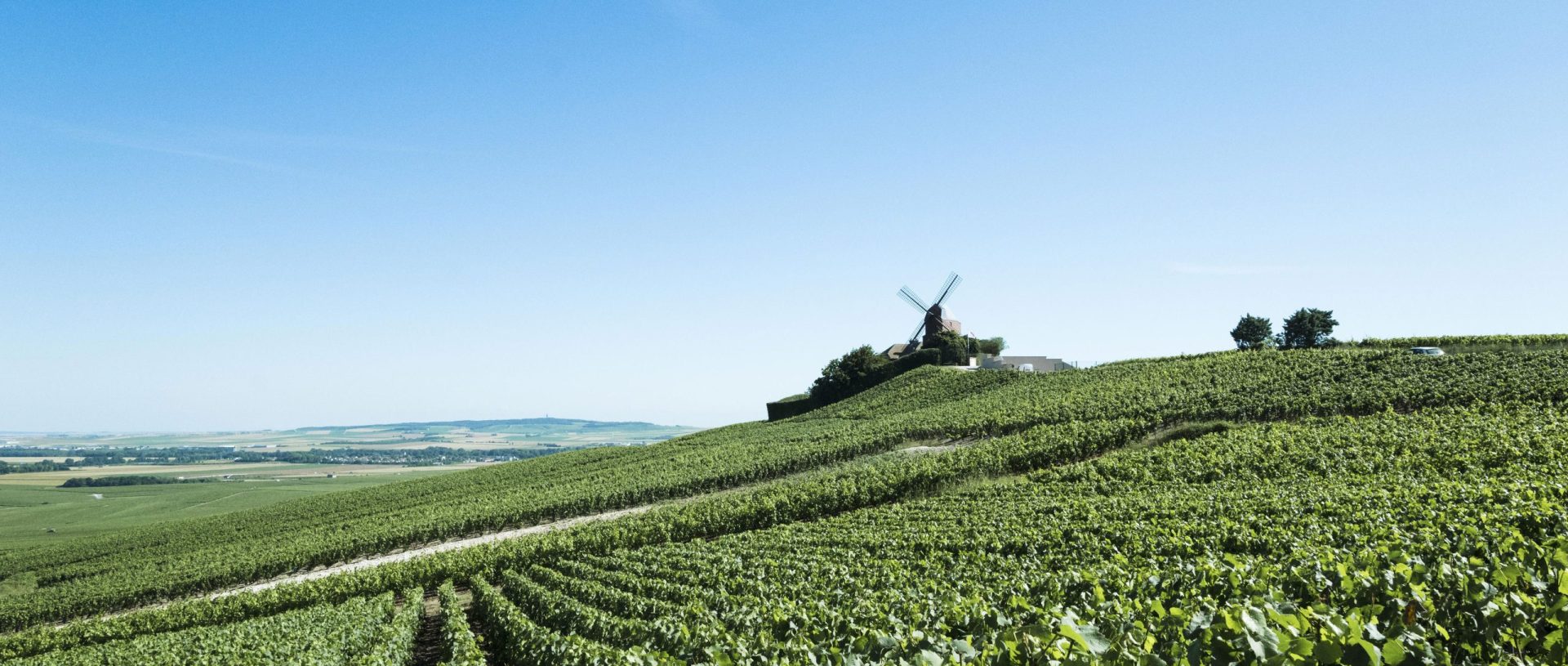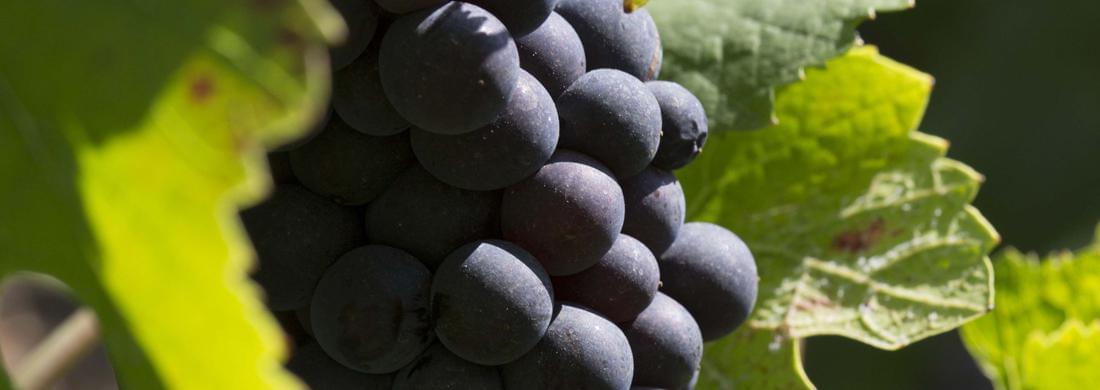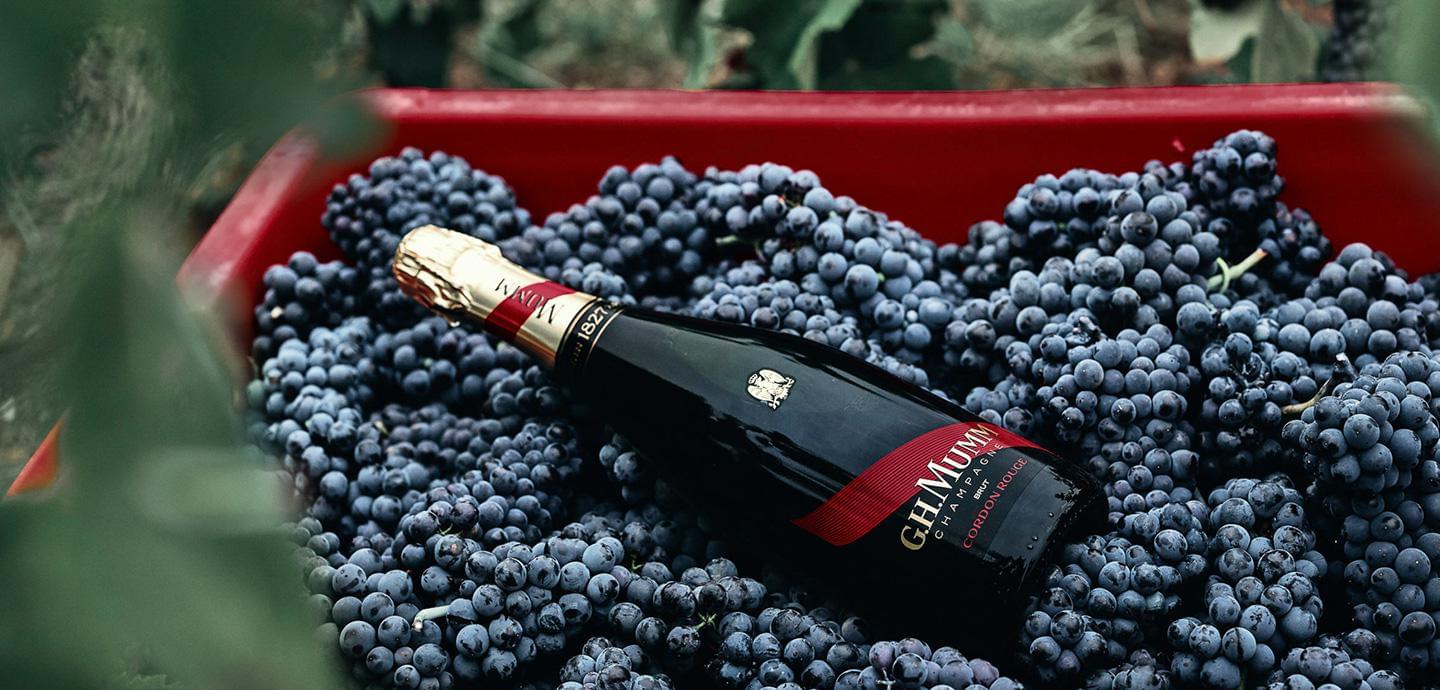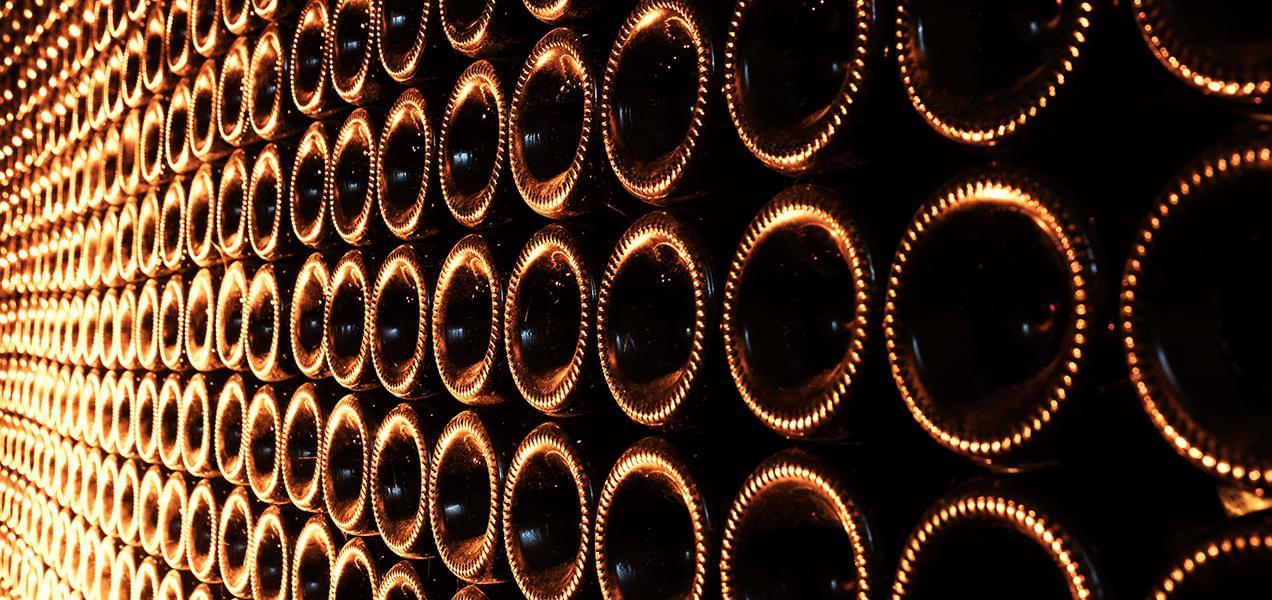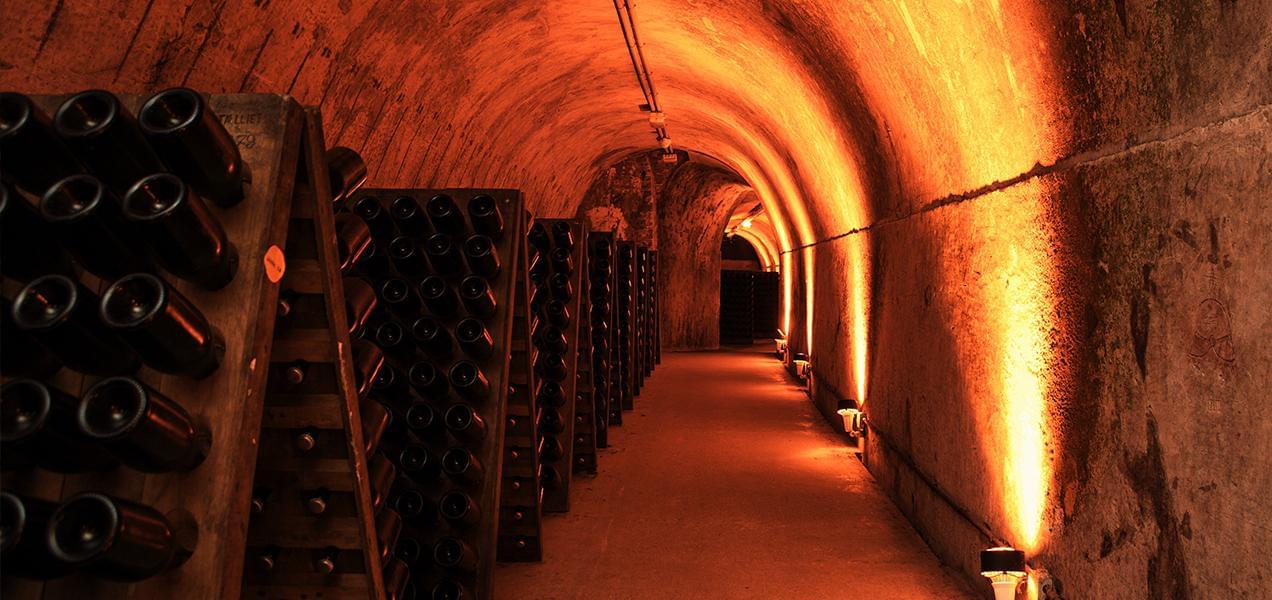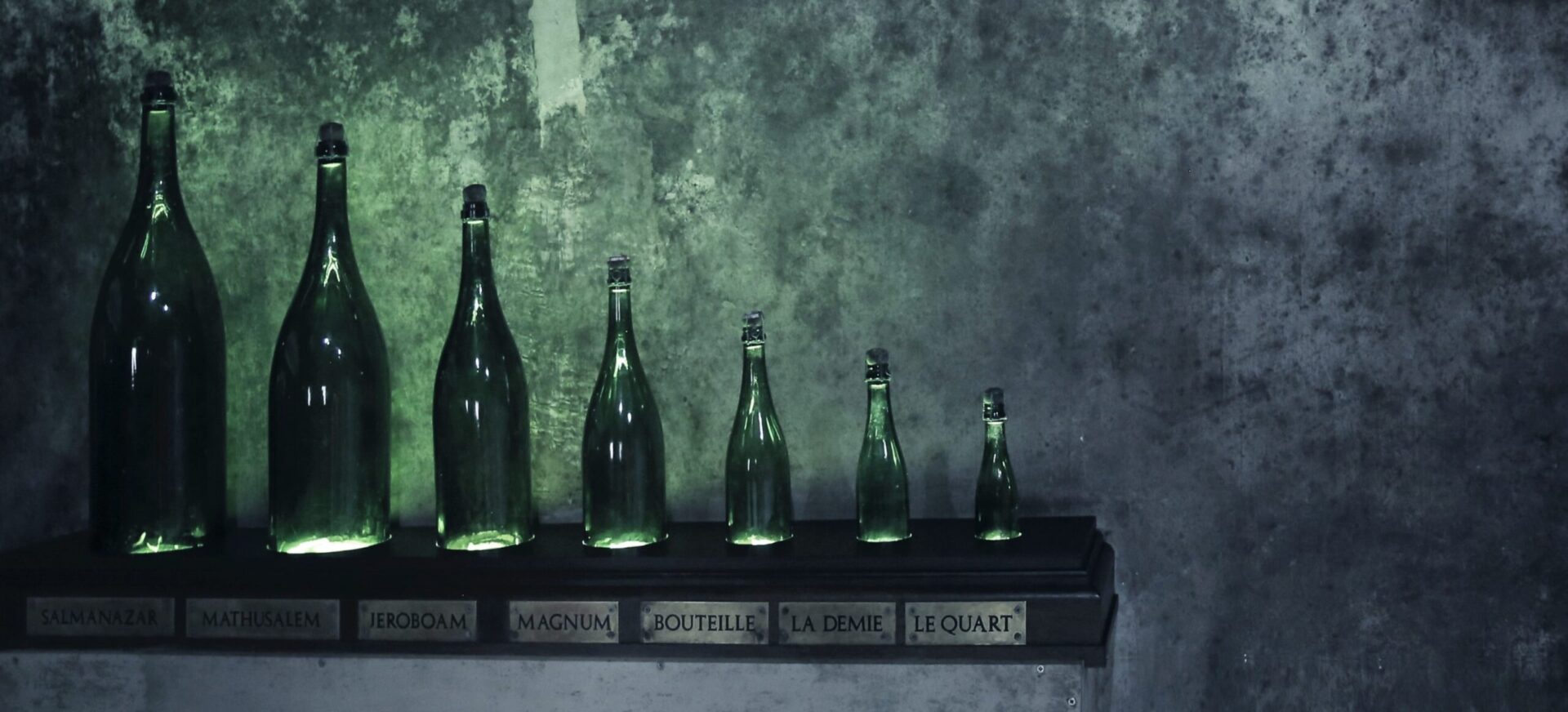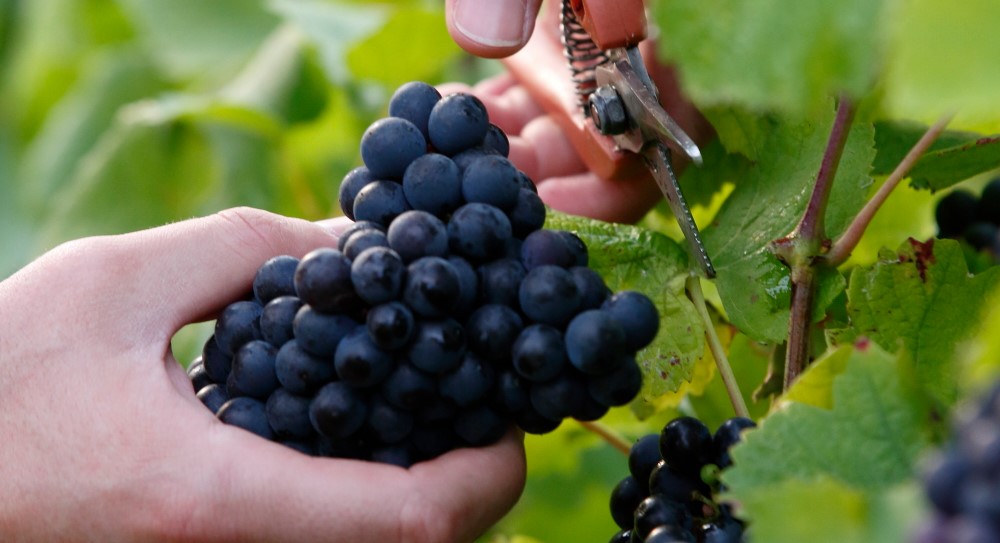1. Bottle fermentation
The still wine becomes champagne while hidden in the depths of Mumm’s cellars. The liqueur de tirage triggers a second alcoholic fermentation. Over the course of a month, at a constant temperature of 11°C, bubbles gradually form. This is how the wine becomes sparkling. Its alcoholic strength increases from 11% to 12%. The quality of this fermentation will determine how gentle the sparkle of Mumm’s champagnes is, as well as their degree of freshness and depth. As the bubbles are formed, so the pressure inside the bottle increases, reaching as much as 6 bar.
2. Maturation
The bottles are stored on their sides in Mumm’s cellars.
Dug by hand out of the chalk, these cellars comprise 25km of galleries in total, taking 70 years to excavate.
Today, they house nearly 25 million bottles.
Over many months, the wines develop their richness of taste and aromatic complexity. During the ageing process, the yeast forms a deposit in the bottle. It’s through contact with this deposit that the wine acquires its rich taste and distinctive character.
The winemaking team prefers to age the champagnes for longer than the legal minimum to create wines of perfect maturity. This means two and a half years for Cordon Rouge instead of eighteen months, and almost five years for vintage champagnes rather than three years. Another instance of the quality of Mumm champagne.
3. Dosage
A liqueur de dosage, made from a mixture of cane sugar and old Mumm champagne, is added to the wine.
An integral part of the company’s expertise, the exact composition of the various formulas of liqueurs de dosage is a secret known only to the Cellar Master. The proportion of sugar added dictates the style of champagne produced – Brut or Extra-Brut, Sec or Demi-Sec.
The liqueur used at Maison Mumm is drier than most. At between 6g/l and 9g/l instead of the usual 12g for a Brut champagne, it allows the full subtlety of the blend to come through.
Finally, Chef de Caves insists that all champagnes be left to rest before shipping, thereby letting the liqueur blend properly with the wine.
